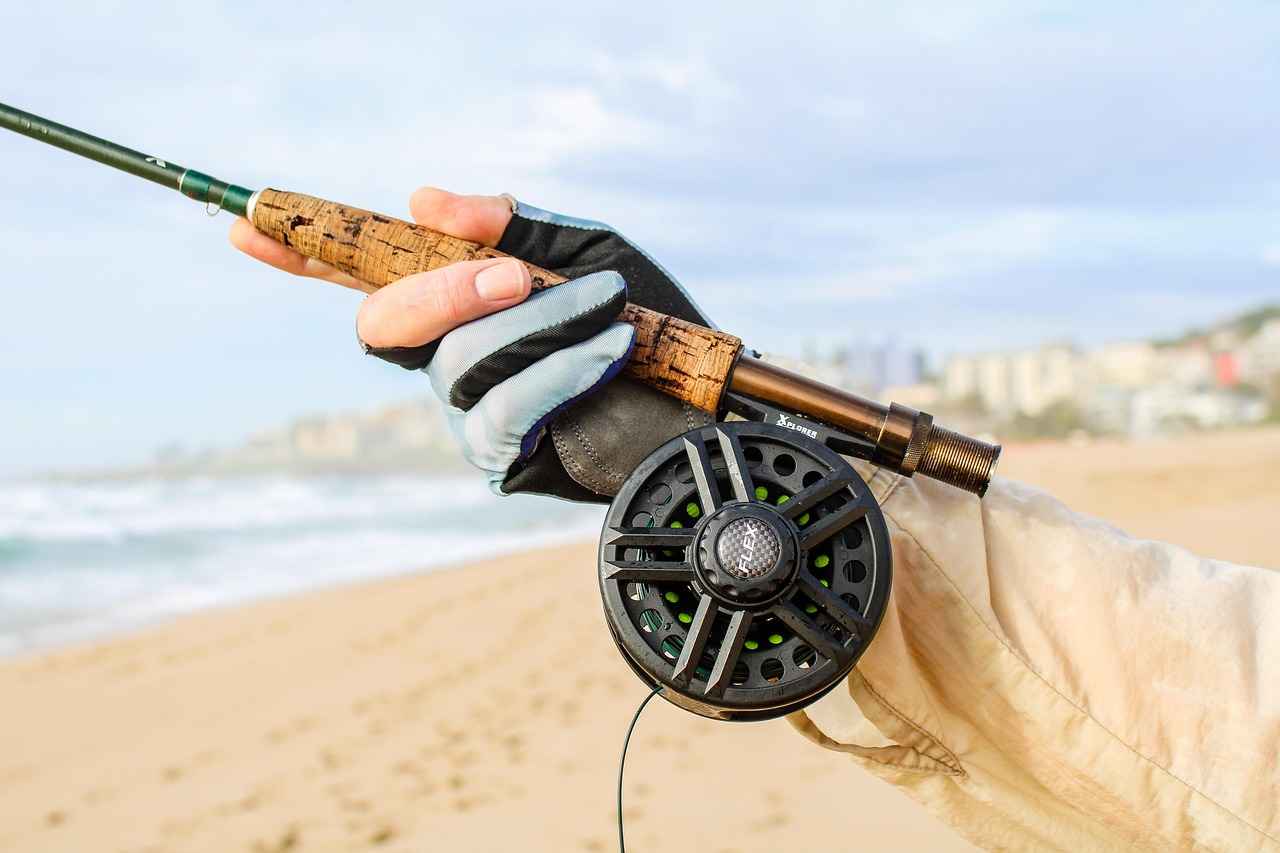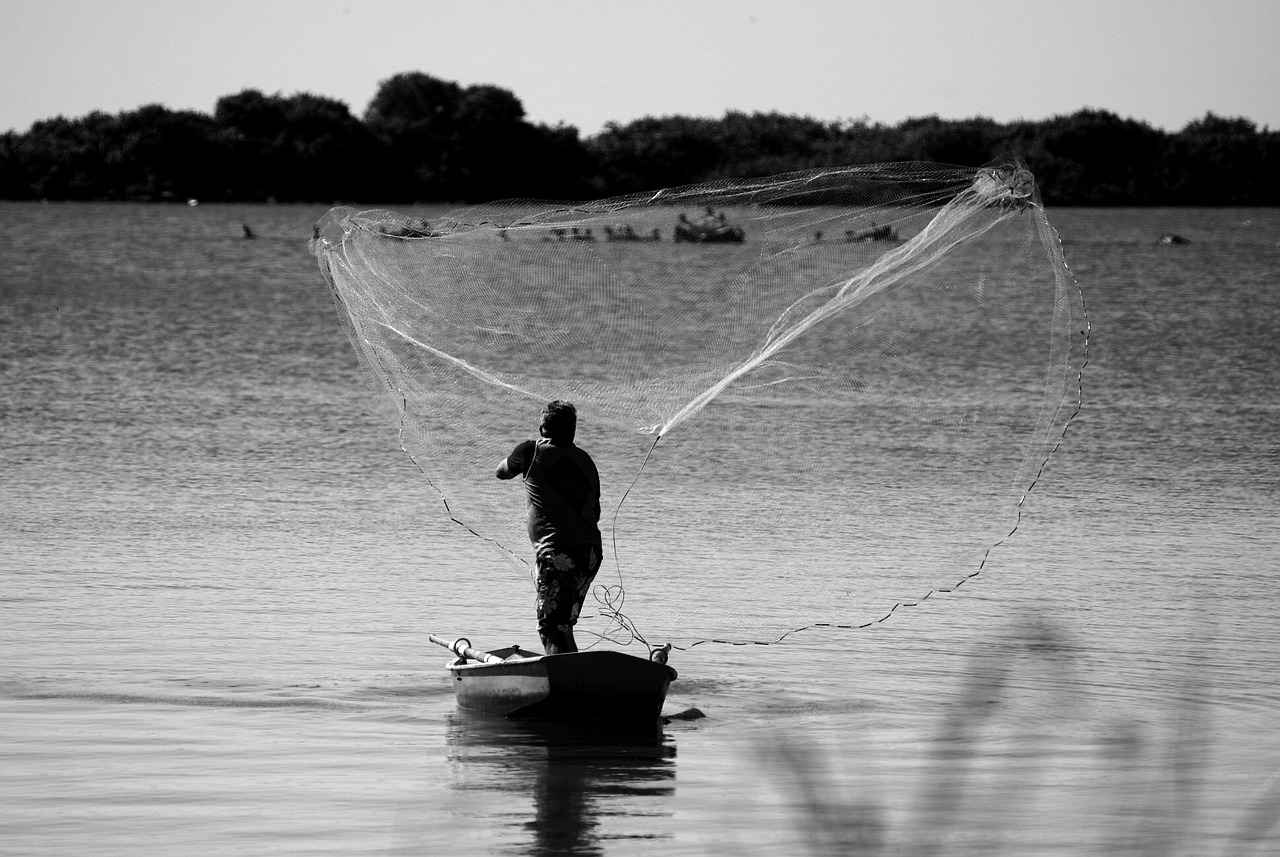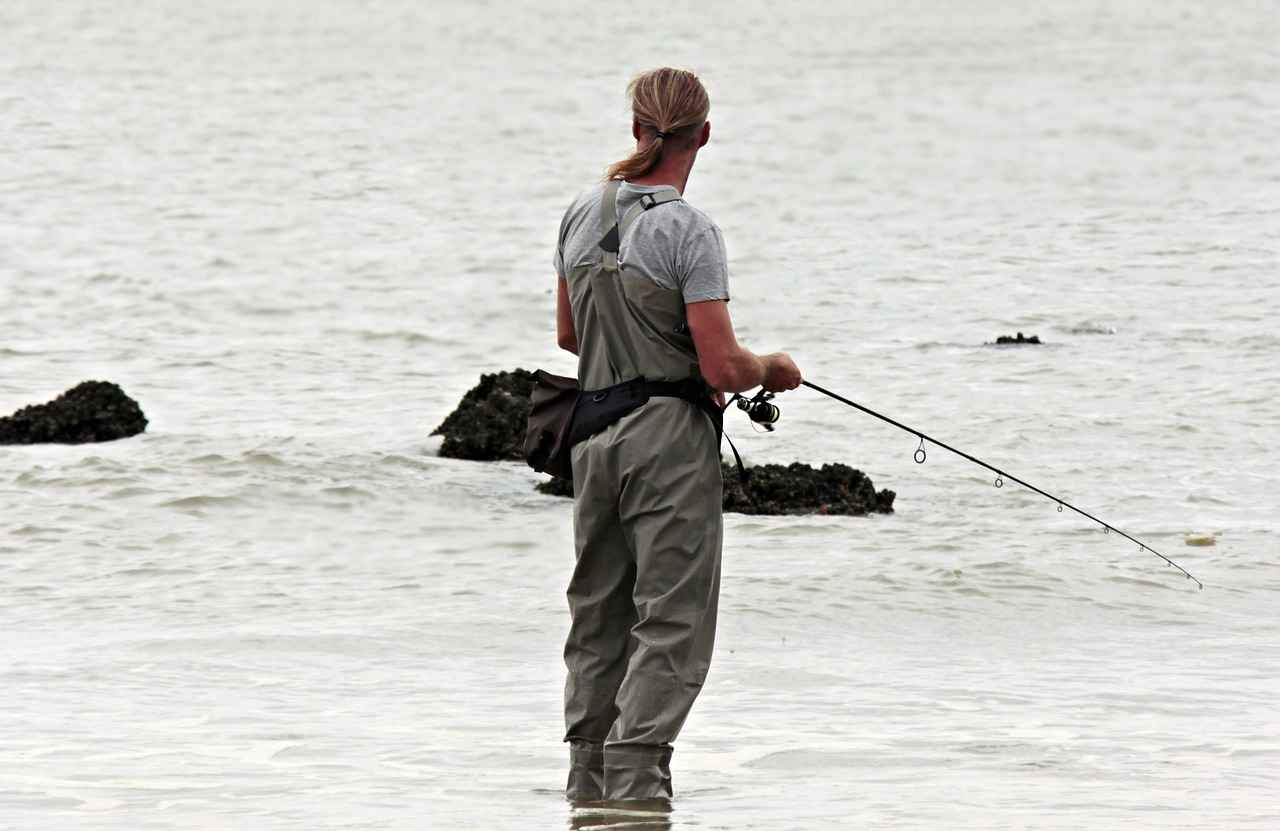This guide offers practical insights on how to effectively use a fishing reel that lacks an anti-reverse trigger, ensuring that anglers can still enjoy a successful fishing experience. Understanding the nuances of operating such reels can greatly enhance your fishing trips.
Understanding the Function of an Anti-Reverse Trigger
An anti-reverse trigger is a crucial feature in many fishing reels, preventing the handle from spinning backward. This mechanism allows for better control while reeling in fish. When using a reel without this feature, anglers must adapt their techniques to maintain line tension and avoid losing catches.
Types of Fishing Reels Without Anti-Reverse
Fishing reels come in various types, including:
- Spinning Reels: Popular for their ease of use, these reels require careful management of line tension when lacking an anti-reverse trigger.
- Baitcasting Reels: Known for their precision, these reels demand a good understanding of mechanics to compensate for the absence of anti-reverse.
- Conventional Reels: Often utilized in deep-sea fishing, techniques for these reels can be adapted to enhance control and efficiency.
Techniques for Using a Fishing Reel Without Anti-Reverse
When using a fishing reel without an anti-reverse feature, adapting your technique is vital. Here are some effective methods:
- Manual Control of the Handle: Anglers should practice maintaining tension on the line while reeling to prevent backlash and ensure a smooth catch.
- Utilizing the Drag System: The drag system is essential for managing line tension. Properly adjusting the drag can prevent line breakage and improve control during the fight with a fish.
Common Mistakes to Avoid
Even seasoned anglers can make errors when using reels without an anti-reverse trigger. Here are some common pitfalls:
- Neglecting Line Tension: Failing to maintain adequate line tension can lead to tangles and missed catches. Always be aware of the tension while reeling.
- Overusing the Reel Handle: Relying too much on the reel handle can cause fatigue. It’s important to incorporate your body’s natural movements to assist in reeling.
Benefits of Using a Reel Without Anti-Reverse
While it might seem challenging, using a fishing reel without an anti-reverse trigger offers unique advantages:
- Improved Skill Development: Anglers can enhance their skills, leading to better handling and technique, which ultimately improves overall fishing proficiency.
- Cost-Effective Options: Reels without anti-reverse triggers are often more affordable, allowing anglers to allocate funds toward other fishing gear or experiences.
Maintenance Tips for Fishing Reels
Proper maintenance is crucial for the longevity of any fishing reel, especially those without an anti-reverse trigger. Regular care can significantly enhance performance:
- Cleaning the Reel: Regular cleaning prevents dirt and salt buildup. Rinse the reel with freshwater after each fishing trip to maintain its functionality.
- Lubricating Moving Parts: Proper lubrication minimizes wear and tear. Use suitable lubricants to keep the reel operating smoothly and efficiently.
Learning from Experienced Anglers
Engaging with experienced anglers can provide valuable insights and tips for using reels without anti-reverse triggers. Their shared experiences can guide your technique and enhance your fishing trips, making them more enjoyable and successful.

Understanding the Function of an Anti-Reverse Trigger
When it comes to fishing reels, understanding the functionality of an anti-reverse trigger is essential for any angler looking to optimize their fishing experience. This feature is designed to prevent the handle from spinning backward, thereby providing the angler with superior control during the reeling process. Without this mechanism, anglers must adapt their techniques to ensure they maintain effective control over their catch.
The absence of an anti-reverse trigger can significantly alter how one approaches fishing. The primary function of this feature is to allow the angler to reel in the line without the handle reversing its direction, which can lead to complications such as backlash or tangling of the line. Understanding how to manage a fishing reel without this feature can enhance your skills and improve your overall fishing success.
Here are some key insights into the function of an anti-reverse trigger:
- Control and Stability: The anti-reverse trigger provides stability while reeling in fish, allowing for a more controlled retrieval process. Anglers can focus on the fight without worrying about the handle spinning backward.
- Technique Adaptation: Knowing that your reel lacks this feature means you must adapt your reeling technique. This can involve using your body weight and positioning to assist in the reeling process.
- Line Management: Maintaining proper line tension becomes crucial when using reels without an anti-reverse trigger. Anglers must be vigilant to avoid slack that could lead to lost catches.
To effectively use a fishing reel without an anti-reverse trigger, anglers should consider the following strategies:
1. Manual Control: Always be prepared to manually control the handle. This involves being conscious of the direction of the handle and adjusting your grip accordingly.2. Utilizing the Drag System: Adjust the drag settings to accommodate the absence of an anti-reverse. This will help manage the tension and prevent line breakage during a fight.3. Practice: Regular practice with a reel lacking this feature will enhance your skills and boost your confidence on the water.
In summary, while an anti-reverse trigger enhances the usability of a fishing reel, understanding how to operate without it can lead to improved fishing techniques and skills. By being aware of the challenges and adapting accordingly, anglers can still enjoy a successful fishing experience.
Ultimately, the key to mastering a fishing reel without an anti-reverse trigger lies in practice and adaptation. With time, you can develop the necessary skills to make the most of your fishing adventures, regardless of the equipment you have at your disposal.

Types of Fishing Reels Without Anti-Reverse
When it comes to fishing, understanding the various types of fishing reels is essential for any angler. Among these, some reels are designed without an anti-reverse trigger. This feature is crucial for preventing the handle from spinning backward, which allows for better control during the reeling process. However, many anglers still find themselves using reels without this feature, whether due to preference, cost, or availability. Below, we explore the different types of fishing reels that typically lack an anti-reverse trigger and the unique challenges they present.
| Type of Reel | Characteristics | Challenges Without Anti-Reverse |
|---|---|---|
| Spinning Reels | Lightweight, easy to use, suitable for various fishing techniques. | Requires careful line tension management to avoid backlash. |
| Baitcasting Reels | Allows for precision casting, ideal for experienced anglers. | Demands precise handling; absence of anti-reverse can lead to difficulties in controlling the line. |
| Conventional Reels | Designed for heavy-duty fishing, often used in deep-sea environments. | Adapting techniques is crucial for managing larger catches without reverse control. |
Spinning Reels are popular among beginners and seasoned anglers alike. They are versatile and can be used in freshwater and saltwater fishing. However, using a spinning reel without an anti-reverse can complicate the reeling process. Anglers must learn to maintain tension on the line actively, as the handle may spin backward during a catch, leading to potential tangles and lost fish.
Baitcasting Reels provide excellent control and accuracy for more experienced anglers. These reels require a certain level of skill to operate effectively, and the absence of an anti-reverse feature can pose challenges. Anglers must be adept at managing their casting technique and line tension to compensate for the lack of backward handle control, ensuring that they can reel in their catch smoothly.
Conventional Reels, often used for deep-sea fishing, are built to handle larger fish. Without an anti-reverse trigger, angling techniques must be adapted to ensure that the angler maintains control over the fish. This might involve using the drag system effectively and learning to pull the line in a way that allows for a successful catch without the typical support of an anti-reverse feature.
In conclusion, while fishing reels without an anti-reverse trigger present unique challenges, they also offer opportunities for skill development and cost savings. By understanding the characteristics and challenges of different reel types, anglers can adapt their techniques accordingly, ensuring a rewarding fishing experience.
Spinning Reels
are among the most widely used fishing reels for both novice and experienced anglers. Their popularity stems from their versatility and ease of use. However, using a spinning reel without an anti-reverse feature can significantly impact performance and the overall fishing experience. Understanding how to manage line tension is crucial for success when utilizing such reels.
The primary function of the anti-reverse mechanism is to prevent the handle from spinning backward during retrieval. This feature allows anglers to maintain control over the line tension and the fish they are reeling in. Without it, anglers must adapt their techniques to ensure they can still effectively manage their catch.
When using a spinning reel without an anti-reverse, anglers face unique challenges. One of the most critical aspects is maintaining consistent line tension. Without the anti-reverse, the handle can rotate backward when pressure is applied, which can lead to backlash and tangles. This situation can be frustrating, especially when trying to land a fish.
- Manual Control: Anglers need to develop a keen sense of manual control over the handle. This means being mindful of the pressure applied while reeling in. Practicing this skill helps prevent the handle from spinning backward.
- Line Management: Keeping an eye on line tension is essential. Anglers should learn to feel the resistance of the fish and adjust their reeling speed accordingly. This adjustment helps maintain control and reduces the risk of losing the catch.
- Utilizing the Drag System: The drag system is crucial in managing line tension. Properly adjusting the drag can help prevent line breakage, especially when dealing with larger fish. A well-set drag allows the fish to pull line without snapping it, giving anglers more control during the fight.
Even seasoned anglers can make mistakes when using spinning reels without an anti-reverse. Here are some common pitfalls to watch out for:
- Neglecting Tension: Failing to maintain adequate line tension can lead to tangles and lost catches. Always be aware of the line’s status while reeling.
- Overusing the Reel Handle: Relying too heavily on the reel handle can cause fatigue. Instead, learn to use your body’s natural movements to assist in reeling, which can improve efficiency.
While it may seem challenging, using a spinning reel without an anti-reverse can offer unique advantages:
- Skill Development: Anglers can improve their skills by learning to handle the reel effectively. This experience can lead to better overall fishing proficiency.
- Cost-Effectiveness: Fishing reels without an anti-reverse mechanism are often more affordable. This allows anglers to allocate their budget towards other essential fishing gear or experiences.
Proper maintenance is essential for the longevity and performance of spinning reels, especially those lacking an anti-reverse feature. Regular care can enhance reliability:
- Cleaning: Regular cleaning prevents dirt and salt buildup, ensuring smooth operation. Rinsing the reel with freshwater after each fishing trip is a good practice.
- Lubrication: Keeping moving parts well-lubricated minimizes wear and tear. Use the appropriate lubricants to maintain optimal function.
Engaging with experienced anglers can provide valuable insights and techniques for using spinning reels without anti-reverse triggers. Their shared knowledge can guide your approach and enhance your fishing adventures.
Baitcasting Reels
Baitcasting reels are a popular choice among anglers, known for their precision and control. However, these reels require precise handling and understanding of their mechanics, especially when they lack an anti-reverse feature. This article explores how to effectively use baitcasting reels without an anti-reverse trigger, ensuring a smooth and successful fishing experience.
Baitcasting reels are designed for accuracy, allowing anglers to cast heavy lures with precision. Unlike spinning reels, baitcasting reels offer better control over the line and lure, making them ideal for targeting specific fish species. However, the absence of an anti-reverse feature can complicate reeling in fish, necessitating a deeper understanding of the reel’s mechanics.
To effectively use a baitcasting reel without an anti-reverse trigger, anglers must grasp the basic mechanics involved. The key components include:
- Spool: Holds the fishing line and releases it during casting.
- Handle: Used to reel in the line and control the spool.
- Drag System: Regulates the tension on the line, allowing fish to pull line without breaking it.
Understanding how these components work together is essential for compensating for the lack of an anti-reverse feature.
To ensure a smooth fishing experience with a baitcasting reel without an anti-reverse trigger, consider the following techniques:
Without an anti-reverse, anglers must manually control the handle while reeling. This involves maintaining consistent tension on the line to prevent backlash. It’s crucial to practice this technique to enhance your reeling efficiency.
The drag system plays a vital role in managing line tension. Properly adjusting the drag can help prevent line breakage and provide better control during the fight with the fish. Ensure that the drag is set appropriately for the type of fish you are targeting.
Even seasoned anglers can make mistakes when using baitcasting reels without an anti-reverse feature. Here are some common pitfalls to watch out for:
- Neglecting Line Tension: Failing to maintain proper line tension can lead to tangles and lost catches. Always be mindful of the tension while reeling in.
- Overusing the Reel Handle: Relying too heavily on the reel handle can cause fatigue. Instead, use your body’s natural movements to assist in reeling, making the process more efficient.
Despite the challenges, using baitcasting reels without an anti-reverse trigger offers several advantages:
- Skill Development: Anglers can improve their handling and technique, leading to greater overall fishing proficiency.
- Cost-Effectiveness: Baitcasting reels without anti-reverse triggers are often more affordable, allowing anglers to allocate their budget to other fishing gear or experiences.
Proper maintenance is essential for the longevity and performance of baitcasting reels. Here are some tips:
- Regular Cleaning: Clean your reel after each use to prevent dirt and salt buildup. Rinse with freshwater and dry thoroughly.
- Lubrication: Regularly lubricate the moving parts to minimize wear and ensure smooth operation. Use appropriate lubricants for best results.
Engaging with seasoned anglers can provide valuable insights into using baitcasting reels without an anti-reverse trigger. Their experiences can guide your technique and help you make the most of your fishing trips.
By understanding the mechanics and employing effective techniques, anglers can successfully navigate the challenges of baitcasting reels without an anti-reverse feature. With practice and attention to detail, you can enhance your fishing experience and increase your chances of landing that big catch.
Conventional Reels
When it comes to deep-sea fishing, are a popular choice among anglers due to their durability and ability to handle heavy lines and large catches. However, many conventional reels lack an anti-reverse trigger, which can make reeling in fish a bit more challenging. Adapting your fishing techniques is essential to maximize control and efficiency while using these reels.
Understanding the mechanics of conventional reels is crucial for anglers. Unlike spinning or baitcasting reels, conventional reels operate differently, requiring a different approach to manage the line effectively. Without an anti-reverse feature, the handle can spin backward, which may lead to complications when trying to reel in a fish. Therefore, mastering control techniques becomes vital.
To effectively use a conventional reel without an anti-reverse trigger, consider the following techniques:
- Manual Handle Control: Anglers must learn to manually control the handle to maintain tension on the line. This involves using a steady, rhythmic motion while reeling in, which helps prevent backlash and ensures a smoother retrieval.
- Utilizing the Drag System: The drag system is a key component in managing the tension of the line. Adjusting the drag appropriately can help prevent line breakage and allow for better control over the fish during the fight.
- Body Mechanics: Instead of relying solely on the reel handle, incorporate your body’s natural movements. Use your legs and core to assist in reeling, which can reduce fatigue and enhance efficiency.
Even seasoned anglers can fall prey to common mistakes when using conventional reels without an anti-reverse trigger. Here are some pitfalls to watch out for:
- Neglecting Line Tension: Failing to maintain adequate line tension can lead to tangles and lost catches. Always be mindful of the tension while reeling in.
- Overusing the Reel Handle: Relying too much on the reel handle can result in fatigue. Instead, focus on using your body effectively to assist in the reeling process.
While using a conventional reel without an anti-reverse trigger may seem daunting, it also comes with unique benefits:
- Skill Development: Learning to use these reels can enhance an angler’s skills, encouraging better handling and technique, which can lead to greater overall fishing proficiency.
- Cost-Effectiveness: Conventional reels without anti-reverse triggers are often more affordable, allowing anglers to invest in other fishing gear or experiences.
Proper maintenance is essential for the longevity of any fishing reel, especially those without an anti-reverse trigger. Regular care can enhance performance and reliability:
- Cleaning the Reel: Regular cleaning prevents dirt and salt buildup. Rinse the reel with freshwater after each fishing trip to ensure smooth operation.
- Lubricating Moving Parts: Proper lubrication of moving parts minimizes wear and tear. Use appropriate lubricants to keep the reel functioning smoothly.
In conclusion, using a conventional reel without an anti-reverse trigger can be a rewarding challenge for anglers. By adapting techniques, avoiding common mistakes, and maintaining the reel properly, you can enhance your fishing experience and improve your skills on the water.

Techniques to Use a Fishing Reel Without Anti-Reverse
Fishing can be a rewarding experience, but using a fishing reel without an anti-reverse trigger presents unique challenges. Adapting your technique is vital to ensure a successful catch. Below are some effective methods and insights to help you navigate these challenges and enhance your fishing skills.
When fishing with a reel that lacks an anti-reverse feature, anglers must be more conscious of their techniques. The absence of this feature means that the handle can spin backward, making it crucial to maintain control during the reeling process. Here are some techniques to consider:
Without an anti-reverse trigger, manual control of the handle becomes essential. Anglers should practice keeping a steady tension on the line while reeling. This can help prevent backlash and ensure smoother operation. Here are some tips:
- Practice Consistency: Develop a rhythm when reeling in your line. Consistent pressure helps keep the line taut.
- Use Your Body: Engage your core and legs to assist in the reeling process, reducing fatigue on your arms.
The drag system is a critical component when fishing without an anti-reverse trigger. Properly adjusting the drag can significantly improve your control over the fish during the fight. Here’s how to manage it:
- Adjust Before Casting: Set your drag according to the size of the fish you are targeting. A too-tight drag can lead to line breakage.
- Monitor During the Fight: Be ready to adjust the drag while fighting a fish to avoid losing it.
One of the most common mistakes anglers make is neglecting line tension. In the absence of an anti-reverse trigger, maintaining adequate tension is crucial to avoid tangles and lost catches. Here are some strategies:
- Stay Alert: Always be aware of the line’s tension while reeling in. A slack line can lead to missed opportunities.
- Use Your Finger: Lightly press your finger against the line while reeling to maintain tension and control.
Understanding fish behavior can greatly enhance your fishing success. Without an anti-reverse trigger, being able to read the fish’s movements is even more critical. This involves:
- Watching for Signs: Pay attention to the fish’s movements and adjust your reeling technique accordingly.
- Adapting Quickly: Be ready to change your approach based on how the fish is responding to your reel.
Even seasoned anglers can fall into traps when using reels without anti-reverse triggers. Awareness of these pitfalls can enhance your fishing experience:
- Overusing the Reel Handle: Relying too heavily on the reel can lead to fatigue. Use your body’s natural movements to assist.
- Ignoring Reel Maintenance: Regular maintenance is essential for optimal performance. Clean and lubricate your reel to avoid issues.
Using a fishing reel without an anti-reverse trigger can be a rewarding challenge. By adapting your techniques, maintaining awareness of line tension, and understanding the mechanics of your reel, you can significantly improve your chances of a successful catch. With practice and patience, you will find that these adjustments can enhance your overall fishing experience.
Manual Control of the Handle
When fishing with a reel that lacks an anti-reverse trigger, understanding how to manually control the handle becomes a crucial skill for anglers. This section delves into the techniques and strategies necessary for effectively managing your reel, ensuring a successful fishing experience.
Without the anti-reverse feature, the handle of the reel can spin backward during reeling. This can lead to backlash and tangles, making it essential for anglers to maintain control. Mastering manual control allows you to reel in fish smoothly while reducing the risk of losing your catch.
One of the key aspects of manual control is maintaining tension on the line. Anglers should practice keeping a steady pull while reeling in. This involves using your wrist and arm to apply consistent pressure, which can help prevent the line from going slack and causing backlash. Here are some tips:
- Practice Steady Reeling: Focus on a smooth and steady motion while reeling. Avoid jerky movements that can disrupt line tension.
- Adjust Your Grip: Experiment with different grips on the handle to find what feels most comfortable and allows for better control.
- Use Your Body: Leverage your body weight to assist in reeling. This can help reduce fatigue and improve efficiency.
The drag system is another critical component when using a reel without an anti-reverse feature. Properly adjusting the drag can help you manage line tension effectively. Here’s how to use it to your advantage:
- Set the Drag Appropriately: Before you start fishing, ensure that the drag is set to a level that allows the fish to pull line without breaking it.
- Adjust During the Fight: If you feel a strong pull from the fish, don’t hesitate to adjust the drag to maintain control. This can help you avoid line breakage.
- Practice Makes Perfect: Spend time practicing with your drag system to become familiar with its response during different fishing scenarios.
Even experienced anglers can fall into traps when fishing without an anti-reverse trigger. Here are some common mistakes to avoid:
- Neglecting Tension: Failing to maintain adequate line tension can lead to tangles and lost catches. Always be mindful of the tension while reeling in.
- Over-Relying on the Handle: Overusing the reel handle can lead to fatigue. Learn to use your body’s natural movements to assist in reeling.
To become proficient in manual control, practice is vital. Spend time on the water focusing solely on your reeling technique. Try to reel in different sizes of fish, as this will help you adapt to varying levels of resistance. Additionally, consider practicing with a friend or mentor who can provide feedback on your technique.
In conclusion, mastering manual control of the handle when using a fishing reel without an anti-reverse trigger is essential for a successful fishing experience. By maintaining line tension, utilizing the drag system effectively, and avoiding common mistakes, anglers can enhance their skills and enjoy the thrill of fishing without the complexities of an anti-reverse mechanism.
Utilizing the Drag System
When it comes to fishing, the right techniques can greatly influence your success. One critical aspect of this is the drag system, which is essential for managing line tension effectively. The drag system allows anglers to control how much resistance a fish feels when it pulls on the line, making it a vital component in ensuring a successful catch.
Adjusting the drag properly can prevent line breakage, which is a common issue faced by many anglers. When the drag is set too tight, the line may snap under the strain of a fighting fish. Conversely, if the drag is too loose, the fish can run freely, resulting in lost catches. Thus, finding the right balance is crucial. Here are some practical tips on how to utilize the drag system effectively:
- Understand Your Gear: Familiarize yourself with the specifications of your fishing reel. Different reels have different drag systems, and knowing how yours operates will help you make informed adjustments.
- Test the Drag: Before you start fishing, it’s wise to test the drag on your reel. Pull on the line to see how much resistance it offers. Adjust it until you feel comfortable with the amount of pressure it exerts.
- Adjust During the Fight: As you engage with a fish, be prepared to adjust the drag. If the fish makes a strong run, loosen the drag slightly to prevent line breakage. Conversely, if the fish is not putting up much fight, you can tighten the drag to reel it in more quickly.
- Monitor Line Condition: Always keep an eye on the condition of your line. Frayed or damaged line can affect how the drag functions. Replace any worn line to maintain optimal performance.
Another important factor is the material of the line you’re using. Different lines have varying strengths and elasticity, which can influence how the drag system performs. For instance, braided lines are generally stronger and more sensitive, allowing for a tighter drag setting without the risk of breakage.
Moreover, the drag system is not just about preventing breakage; it also enhances control over the fish during the fight. By adjusting the drag, you can dictate how much energy the fish expends. A well-managed drag can tire the fish more quickly, allowing you to reel it in with greater efficiency.
Ultimately, mastering the drag system requires practice and experience. Each fishing scenario may demand different drag settings based on the species of fish you are targeting, the type of water you are in, and the specific conditions of the day. By paying close attention to these factors and making adjustments as needed, you can significantly improve your fishing success.
In summary, the drag system is a crucial element in fishing that, when utilized correctly, can enhance your control over the line and the fish. By understanding its mechanics and practicing effective adjustments, you can prevent line breakage and improve your overall fishing experience.

Common Mistakes to Avoid
When using a fishing reel without an anti-reverse trigger, even seasoned anglers can fall into common traps that hinder their fishing experience. Understanding these pitfalls is essential for improving your technique and ensuring a successful catch. Below are some of the most frequent mistakes to avoid, along with tips to enhance your fishing skills.
One of the most critical aspects of fishing is maintaining proper line tension. Without an anti-reverse trigger, anglers may inadvertently allow the line to slacken during reeling. This can lead to tangles and even lost fish. Always be vigilant about the tension on your line. Practice reeling in with consistent pressure to keep the line taut and avoid complications.
Many anglers tend to rely heavily on the reel handle when reeling in fish. This can lead to fatigue and reduced efficiency. Instead, learn to engage your body’s natural movements to assist in reeling. Use your arms and shoulders to help turn the handle, which allows for a smoother and more sustainable reeling action. This not only conserves energy but also enhances your control over the fish.
The drag system is a crucial component of any fishing reel, especially when fishing without an anti-reverse trigger. Failing to adjust the drag properly can result in line breakage or losing a catch. Make sure to familiarize yourself with how to set the drag according to the type of fish you are targeting. A well-adjusted drag allows the fish to run without snapping the line, giving you a better chance of landing it.
Using a reel without an anti-reverse feature requires specific techniques that may not come naturally. Many anglers underestimate the importance of practice. Spend time practicing your reeling technique, focusing on maintaining tension and adjusting your drag. The more comfortable you become with your reel, the more effectively you can adapt your style for better results.
Regular maintenance is essential for keeping your fishing reel in optimal condition. Neglecting to clean and lubricate your reel can lead to a decline in performance. Make it a habit to clean your reel after each fishing trip to remove dirt and salt buildup. Additionally, ensure that you properly lubricate moving parts to minimize wear and tear, ensuring longevity and reliability.
Fishing conditions can vary greatly depending on the environment. Factors such as water temperature, current, and the type of fish being targeted can influence your technique. Ignoring these elements can lead to frustration and poor results. Always assess the fishing conditions before heading out, and adjust your approach accordingly.
Learning from others can provide invaluable insights that enhance your fishing skills. Engaging with experienced anglers allows you to gain knowledge about techniques and strategies specific to using reels without an anti-reverse trigger. Don’t hesitate to ask questions or seek mentorship; their experiences can guide you in refining your technique and avoiding common mistakes.
By being aware of these common mistakes and taking proactive steps to avoid them, you can significantly improve your fishing experience. Embrace the challenges of using a reel without an anti-reverse trigger, and with practice and diligence, you will enhance your skills and enjoy more successful fishing trips.
Neglecting Line Tension
When it comes to fishing, maintaining adequate line tension is crucial for a successful experience. can lead to various issues, such as tangles and lost catches, which can be frustrating for any angler. Understanding the importance of line tension and how to manage it effectively can significantly enhance your fishing outcomes.
Line tension refers to the amount of resistance on the fishing line when reeling in a catch. If the tension is too loose, the line may become tangled or allow the fish to escape. Conversely, if the tension is too tight, the line can snap or cause the fish to break free. Therefore, finding the right balance is essential.
- Watch for Slack: Always be aware of slack in the line. When reeling in, ensure that the line remains taut to prevent fish from escaping.
- Adjust Your Reel Speed: The speed at which you reel in can affect line tension. Reeling too quickly can cause excessive tension, while reeling too slowly may allow slack. Aim for a steady, moderate pace.
- Use Your Rod: Your fishing rod is a valuable tool for managing line tension. Use it to lift and lower while reeling, which can help maintain appropriate tension levels.
Moreover, different types of fishing reels may require unique approaches to managing line tension. For example, spinning reels are designed to allow for smooth line release, but without an anti-reverse feature, anglers must be especially vigilant about maintaining tension. Baitcasting reels, on the other hand, require more precise handling, and the absence of an anti-reverse can complicate matters further.
One effective technique for managing line tension is to utilize the drag system of your reel. The drag system allows you to set the amount of resistance the fish feels when pulling on the line. By adjusting the drag, you can prevent line breakage and maintain control over the fish during the fight. Setting the drag correctly can also help in keeping the line taut without applying too much pressure.
Another common mistake is overusing the reel handle. Anglers often rely solely on the handle to reel in fish, leading to fatigue and inefficiency. Instead, learn to use your body’s natural movements to assist in reeling. This approach not only reduces fatigue but also allows for better control over line tension.
In conclusion, being mindful of line tension is vital when fishing, especially when using reels without an anti-reverse trigger. By understanding the mechanics of your reel, adjusting your techniques, and utilizing the drag system effectively, you can significantly enhance your fishing experience. Remember, a well-managed line tension can make the difference between a successful catch and a frustrating day on the water.
Overusing the Reel Handle
When it comes to fishing, mastering your equipment is essential for a successful outing. One common mistake that many anglers make is . This can lead to fatigue and decreased efficiency, especially when fishing for extended periods. Understanding how to use your body’s natural movements can significantly improve your reeling technique and overall performance.
Over-reliance on the reel handle can create unnecessary strain on your wrist and arm muscles. This not only leads to fatigue but can also reduce the effectiveness of your reeling technique. When you constantly crank the handle without engaging your body, you may find yourself tiring quickly, which can affect your focus and responsiveness while fishing.
To combat the fatigue associated with overusing the reel handle, it’s crucial to incorporate your entire body into the reeling process. Here are some techniques to consider:
- Engage Your Core: Your core muscles play a vital role in stabilizing your body while you reel. By tightening your core, you can maintain better balance and reduce the load on your arms.
- Use Your Legs: When reeling in a catch, shift your weight between your legs. This transfer of weight allows you to leverage your legs for support, making it easier to crank the reel without straining your arms.
- Maintain a Relaxed Grip: Holding the reel handle too tightly can lead to muscle fatigue. Instead, aim for a relaxed grip that allows for smooth, fluid movements while reeling.
Developing a rhythm while reeling can also help alleviate the strain on your muscles. Instead of cranking the handle continuously, try to establish a cadence that allows for brief pauses. This technique not only gives your muscles a chance to recover but also helps maintain line tension effectively.
Incorporating various reeling techniques can also prevent fatigue. For instance, consider alternating between fast and slow reeling speeds depending on the situation. This variation can help keep your muscles engaged without overexerting them.
Choosing the right gear can also play a significant role in reducing the strain associated with overusing the reel handle. Consider using a fishing reel that is designed for comfort and ease of use. Features like ergonomic handles and lightweight materials can make a significant difference during long fishing sessions.
Lastly, it’s essential to practice good fishing habits. Take breaks when needed, stretch your muscles, and stay hydrated. These simple practices can help you maintain your energy levels throughout the day, ensuring that you remain focused and effective while fishing.
By understanding the importance of not overusing the reel handle and incorporating your body’s natural movements, you can enhance your fishing experience. With practice, you can develop a more efficient reeling technique that not only improves your catch rate but also makes fishing a more enjoyable and less physically taxing activity.

Benefits of Using a Reel Without Anti-Reverse
When it comes to fishing, the gear you choose can significantly influence your experience. One such choice is the fishing reel. While many anglers opt for reels equipped with an anti-reverse trigger, using a reel without this feature can offer unique advantages that enhance both skill development and overall enjoyment.
One of the most notable benefits of using a fishing reel without an anti-reverse trigger is the opportunity for improved skill development. Anglers are required to engage more actively with their equipment, which can lead to better handling techniques. By manually controlling the handle and managing line tension, anglers can develop a more intuitive understanding of the mechanics of fishing. This hands-on approach encourages greater proficiency and can elevate one’s fishing game.
Another significant advantage is the cost-effectiveness of reels without anti-reverse triggers. These reels are often more affordable, making them an attractive option for beginners or those on a budget. The savings can be redirected towards other essential fishing gear, such as rods, lures, or even trips to prime fishing locations. Investing in a quality reel without an anti-reverse feature can provide excellent value while still delivering a rewarding fishing experience.
Utilizing a reel without an anti-reverse trigger can also foster a sense of versatility and adaptability in anglers. Without the automatic support that an anti-reverse provides, anglers must learn to adapt their techniques based on the conditions and the type of fish they are targeting. This adaptability can lead to a deeper connection with the fishing process, as anglers become more attuned to their surroundings and the behavior of the fish.
Fishing is not only a mental challenge but also a physical one. Using a reel without an anti-reverse trigger requires greater physical engagement from the angler. This can lead to a more active fishing experience, as anglers must exert more effort to maintain tension on the line and control the reel. As a result, this can provide a more fulfilling and dynamic fishing experience, promoting a healthy lifestyle.
Fishing is often about more than just the catch; it’s about the experience. Using a reel without an anti-reverse can deepen one’s connection with nature. Anglers are encouraged to focus more on their surroundings, enhancing their appreciation for the environment. This mindfulness can transform a simple fishing trip into a profound experience, fostering a love for nature and the outdoors.
Engaging with other anglers who use reels without anti-reverse triggers can create a sense of community. Sharing tips, techniques, and experiences can lead to valuable learning opportunities. This camaraderie not only enhances individual skills but also builds friendships and connections within the fishing community.
In summary, while using a fishing reel without an anti-reverse trigger may initially seem daunting, the benefits far outweigh the challenges. From enhanced skill development to cost-effectiveness and a deeper connection with nature, these reels can significantly enrich the fishing experience. By embracing the unique advantages of these reels, anglers can enjoy a more fulfilling and rewarding time on the water.
Improved Skill Development
When it comes to fishing, mastering the art requires both practice and the right tools. One aspect that often goes overlooked is the use of a fishing reel without an anti-reverse trigger. While it may seem like a disadvantage, this setup can significantly enhance an angler’s skills and technique.
Using a fishing reel without an anti-reverse mechanism can lead to substantial improvements in an angler’s overall proficiency. This experience pushes anglers to develop their handling skills and refine their techniques, ultimately resulting in a more rewarding fishing experience.
- Enhanced Line Management: Without the anti-reverse feature, anglers must pay closer attention to line tension. This necessity fosters a deeper understanding of how to manage the line effectively, which is crucial for preventing tangles and ensuring smooth reeling.
- Better Reaction Time: The absence of an anti-reverse means anglers need to react quickly to fish movements. This fosters quicker reflexes and better decision-making skills, which are essential in catching fish successfully.
- Increased Focus: Fishing without an anti-reverse encourages greater concentration. Anglers become more attuned to their surroundings and the behavior of fish, leading to improved situational awareness.
Moreover, the challenge of using such a reel can motivate anglers to seek out additional techniques and strategies. They might explore various ways to maintain tension, such as:
1. Practicing the 'Stop and Go' method2. Using body movements to assist in reeling3. Adjusting drag settings to accommodate different fish species
These practices not only enhance skill but also add layers of complexity to the fishing experience, making it more enjoyable and fulfilling.
Another advantage of using a reel without an anti-reverse is the cost-effectiveness. These reels are often more affordable, allowing anglers to invest in other essential gear or experiences. This financial flexibility can encourage beginners to dive into the sport without a hefty initial investment.
As anglers gain proficiency through practice with a non-anti-reverse reel, their confidence naturally increases. This newfound confidence can lead to:
- Willingness to Experiment: Anglers may feel more inclined to try new techniques or tackle more challenging fishing environments.
- Sharing Knowledge: Experienced anglers can pass on their insights and techniques to novices, fostering a community of learning and skill development.
In conclusion, while using a fishing reel without an anti-reverse trigger may present its challenges, the benefits far outweigh them. Anglers can expect to see significant improvements in their skills, from enhanced line management to better reaction times. This unique approach not only builds confidence but also promotes a deeper appreciation for the art of fishing.
Cost-Effective Options
When it comes to fishing gear, affordability is often a significant factor for many anglers. One of the most notable advantages of using a fishing reel without an anti-reverse trigger is its cost-effectiveness. These reels typically come at a lower price point, allowing anglers to allocate their budgets towards other essential fishing gear or experiences.
Fishing reels without anti-reverse triggers can be found in various types, including spinning, baitcasting, and conventional reels. Each type serves different fishing styles and environments, making them accessible to a wide range of anglers, from beginners to seasoned veterans. This diversity in options means that anglers can find a reel that suits their specific needs without breaking the bank.
Additionally, the savings from purchasing a more affordable reel can be redirected towards other important aspects of fishing, such as:
- Quality Rods: Investing in a high-quality fishing rod can enhance your overall fishing experience, providing better sensitivity and control.
- Fishing Tackle: A well-stocked tackle box with lures, hooks, and other accessories can significantly improve your chances of success on the water.
- Fishing Experiences: Whether it’s booking a guided fishing trip or attending a fishing workshop, these experiences can provide invaluable knowledge and enjoyment.
Moreover, opting for a reel without an anti-reverse trigger can also encourage anglers to develop their skills further. The absence of this feature challenges anglers to be more attentive and engaged while reeling in fish, ultimately leading to improved techniques and greater proficiency. This hands-on approach can make fishing more rewarding, as anglers learn to adapt and overcome the challenges presented by their equipment.
While the initial thought might be that a reel without an anti-reverse trigger is a compromise, many anglers find that the benefits outweigh any potential drawbacks. The practical experience gained from using these reels can foster a deeper understanding of fishing mechanics and techniques. As anglers become more familiar with their gear, they often discover new strategies and methods that enhance their overall fishing prowess.
In summary, choosing a fishing reel without an anti-reverse trigger can be a wise financial decision. The cost savings allow for investment in other fishing gear, enhance skill development, and provide opportunities for enriching fishing experiences. Whether you are a novice or a seasoned angler, exploring these cost-effective options can lead to a more fulfilling fishing journey.

Maintenance Tips for Fishing Reels
Proper maintenance is essential for the longevity of any fishing reel, especially those without an anti-reverse trigger. Regular care can significantly enhance performance and reliability, ensuring that your fishing adventures are both enjoyable and successful. This article delves into effective maintenance tips that every angler should follow to keep their reels in top condition.
Cleaning your fishing reel is the first step in maintenance. After each fishing trip, it is crucial to:
- Rinse the reel with freshwater to remove salt, dirt, and debris.
- Use a soft cloth to wipe down the exterior, preventing corrosion.
- Pay special attention to the spool and drag system to ensure they are free from buildup.
Investing a little time in cleaning can extend the life of your reel and maintain its performance.
Proper lubrication is vital to minimize wear and tear on your fishing reel. Follow these steps:
- Use high-quality lubricants specifically designed for fishing reels.
- Apply lubricant to the gears, bearings, and other moving parts to ensure smooth operation.
- Avoid over-lubricating, as excess grease can attract dirt and hinder performance.
Regular lubrication helps in maintaining the functionality of the reel, ensuring it operates smoothly when you need it the most.
The drag system is a critical component of your fishing reel, especially when fighting larger fish. Regularly inspect the drag system by:
- Testing the drag settings before each trip to ensure they are functioning correctly.
- Adjusting the drag to suit the type of fishing and size of fish targeted.
- Replacing any worn or damaged parts promptly to avoid failure during use.
A well-maintained drag system can make a significant difference in your fishing success.
How you store your fishing reel can also impact its longevity. Consider these storage tips:
- Store your reel in a cool, dry place away from direct sunlight.
- Remove the line and clean the reel thoroughly before long-term storage.
- Use a protective case or cover to shield it from dust and moisture.
Proper storage will help preserve the components and ensure that your reel is ready for use when you need it.
Even experienced anglers can make mistakes that affect reel performance. Here are common pitfalls to avoid:
- Neglecting Regular Maintenance: Skipping cleaning and lubrication can lead to costly repairs.
- Improper Use of Lubricants: Using the wrong products can damage the reel and shorten its lifespan.
- Ignoring Worn Parts: Failing to replace damaged components can lead to failure during critical moments.
By being aware of these mistakes, you can ensure that your fishing reel remains in optimal condition.
Engaging with experienced anglers can provide valuable insights and practical tips for maintaining your fishing reel. Their firsthand experiences can guide your maintenance techniques and enhance your overall fishing experience.
In conclusion, proper maintenance is not just about keeping your fishing reel clean; it’s about ensuring that every component functions effectively. By following these maintenance tips, you can significantly improve your fishing reel’s performance and longevity, making your fishing trips more enjoyable.
Cleaning the Reel
Maintaining your fishing reel is crucial for ensuring its longevity and optimal performance. One of the most important aspects of reel maintenance is cleaning. Regular cleaning not only prevents dirt and salt buildup but also ensures that your reel operates smoothly and efficiently.
When fishing, especially in saltwater environments, your reel is exposed to various contaminants that can negatively impact its functionality. Saltwater, dirt, and debris can accumulate in the reel’s mechanisms, leading to corrosion and wear over time. By prioritizing regular cleaning, you can significantly extend the life of your fishing gear.
- Gather Your Supplies: You will need freshwater, a soft cloth, a toothbrush or small brush, and reel oil or grease.
- Rinse with Freshwater: After each fishing trip, especially in saltwater, rinse your reel with freshwater to remove any salt or debris. This simple step is vital for preventing corrosion.
- Disassemble if Necessary: For deeper cleaning, carefully disassemble the reel according to the manufacturer’s instructions. This allows you to reach areas that may accumulate grime.
- Brush Away Residue: Use a soft brush to gently scrub away any remaining dirt or salt. Pay special attention to the spool and drag system, as these areas are crucial for smooth operation.
- Dry Thoroughly: After cleaning, ensure that the reel is completely dry before reassembling. Moisture can lead to rust and other issues.
- Lubricate Moving Parts: Once dry, apply appropriate lubricants to moving parts to minimize wear and tear. This will help your reel function smoothly and efficiently.
How often should you clean your fishing reel? Ideally, you should perform a thorough cleaning after every fishing trip, especially if you have been fishing in saltwater. For freshwater fishing, a cleaning every few trips may suffice, but always inspect your reel for any signs of buildup.
- Difficulty in Reeling: If you notice resistance while reeling in, it may be time for a cleaning.
- Visible Dirt or Salt Crust: Any visible buildup on the reel is a clear sign that it needs attention.
- Unusual Noises: Grinding or squeaking sounds can indicate that dirt is interfering with the reel’s mechanics.
Proper storage is also a part of maintaining your fishing reel. Store your reel in a dry, cool place, and consider using a protective cover to prevent dust and dirt from accumulating. This will ensure that your reel remains in top condition for your next fishing adventure.
In summary, regular cleaning is a fundamental practice for any angler who wants to keep their fishing reel in excellent working condition. By following simple cleaning steps and maintaining a routine, you can enjoy smooth operation and extend the lifespan of your fishing gear.
Lubricating Moving Parts
When it comes to maintaining the performance of your fishing reel, proper lubrication of moving parts is a critical factor that cannot be overlooked. Regular lubrication not only minimizes wear and tear but also ensures that your reel operates at its best, providing a smoother fishing experience.
The components of a fishing reel, such as gears, bearings, and spools, are subjected to continuous friction during use. This friction can lead to significant wear over time, which can ultimately affect the reel’s efficiency and lifespan. By applying the right lubricants, you can significantly reduce this friction, thereby prolonging the life of your reel.
Not all lubricants are created equal. It is essential to select lubricants specifically designed for fishing reels. Look for products that are water-resistant and can withstand varying temperatures. Common types of lubricants used in fishing reels include:
- Grease: Ideal for gears and high-friction areas, grease offers long-lasting protection and is effective at reducing wear.
- Oil: Suitable for bearings and moving parts, oil provides smooth operation and is easier to apply in tight spaces.
Applying lubricant correctly is just as important as choosing the right type. Here are some best practices:
- Clean First: Ensure that all parts are clean and free from dirt or old lubricant before applying new products.
- Use Sparingly: A little goes a long way. Over-lubricating can attract dirt and debris, which can hinder performance.
- Target High-Wear Areas: Focus on areas that experience the most friction, such as the gear assembly and spool bearings.
How often should you lubricate your fishing reel? This largely depends on how frequently you use it. As a general guideline:
- If you fish regularly (weekly or more), consider lubricating your reel every few trips.
- For less frequent use, lubricating at the start of each fishing season is advisable.
Incorporating a regular lubrication routine offers several benefits:
- Enhanced Performance: A well-lubricated reel operates more smoothly, allowing for better casting and retrieval.
- Increased Lifespan: Proper maintenance can extend the longevity of your reel, saving you money in the long run.
- Improved Reliability: A smoothly functioning reel is less likely to fail when you’re in the middle of a catch.
In conclusion, proper lubrication is vital for the maintenance of your fishing reel, especially for those models lacking an anti-reverse trigger. By choosing the right lubricants, applying them correctly, and maintaining a regular schedule, you can ensure that your reel remains in optimal condition. This not only enhances your fishing experience but also contributes to the longevity of your equipment.

Learning from Experienced Anglers
When it comes to fishing, learning from those who have spent years honing their skills can be invaluable. Engaging with experienced anglers not only enriches your knowledge but also enhances your overall fishing experience. This section delves into the insights and practical tips that seasoned anglers can provide, especially when it comes to using reels without anti-reverse triggers.
Experienced anglers have faced numerous challenges and have developed techniques that work best in various situations. Their firsthand knowledge can help you navigate the complexities of fishing reels without anti-reverse triggers. Here are a few reasons to seek their guidance:
- Real-World Experience: They have encountered and solved problems that you may face.
- Technique Refinement: They can offer tips on improving your casting and reeling techniques.
- Equipment Insights: Understanding the nuances of different reels and how to maximize their potential.
Here are some practical tips shared by experienced anglers that can significantly improve your fishing trips:
- Practice Line Management: Maintaining proper tension on the line is crucial, especially with reels lacking an anti-reverse. Seasoned anglers recommend practicing this skill until it becomes second nature.
- Understand the Drag System: The drag system is your ally. Experienced anglers emphasize adjusting the drag to match the size of the fish you are targeting, which can prevent line breakage and improve control during the fight.
- Use Your Body: Instead of relying solely on your arms, use your entire body to assist in reeling. This technique can reduce fatigue and improve efficiency.
Even the best anglers make mistakes. Learning from these errors is essential for growth. Here are common pitfalls they advise avoiding:
- Ignoring Line Tension: Experienced anglers stress the importance of maintaining adequate line tension to prevent tangles and lost catches.
- Overusing the Reel Handle: Relying too much on the handle can lead to fatigue. Instead, use natural body movements to assist in reeling.
Engaging with experienced anglers creates a sense of community. Joining local fishing clubs or online forums can provide you with a wealth of knowledge. Here, you can ask questions, share experiences, and receive feedback on your techniques. Networking with fellow anglers can lead to fishing trips where you can learn directly from their expertise.
Many experienced anglers recommend various resources for further learning:
- Books and Guides: There are numerous books written by seasoned anglers that cover techniques, equipment, and fishing locations.
- YouTube Channels: Many expert anglers share their knowledge through video tutorials, making it easier to visualize techniques.
- Fishing Workshops: Attending workshops can provide hands-on experience and direct advice from experts.
In conclusion, the insights gained from experienced anglers are invaluable for anyone looking to improve their fishing skills, especially when using reels without anti-reverse triggers. Their knowledge and shared experiences can make your fishing trips more enjoyable and successful.
Frequently Asked Questions
- Can I still catch fish with a reel that doesn’t have an anti-reverse trigger?
Absolutely! While it might take a bit of adjustment, you can still catch fish effectively. Just remember to maintain line tension and manually control the handle to avoid backlash.
- What are the main challenges of using a fishing reel without an anti-reverse?
The primary challenge is managing line tension. Without the anti-reverse feature, you need to be more attentive to the handle’s movement to prevent it from spinning backward during reeling.
- How can I improve my skills when using a reel without an anti-reverse?
Practice is key! Focus on controlling the handle and adjusting the drag system effectively. The more you use it, the better you’ll become at handling the reel.
- Are there any specific maintenance tips for reels without an anti-reverse?
Yes! Regularly clean your reel to prevent dirt buildup and lubricate the moving parts to ensure smooth operation. This will extend the life of your reel significantly.
- What types of fishing reels typically don’t have an anti-reverse feature?
Common types include certain spinning reels, baitcasting reels, and conventional reels. Each has its own unique handling techniques when lacking this feature.




